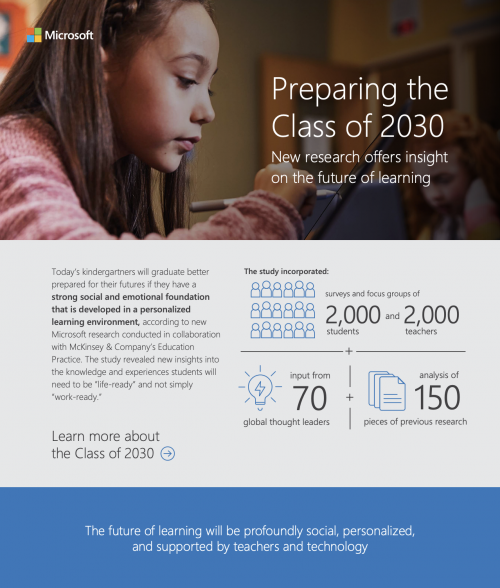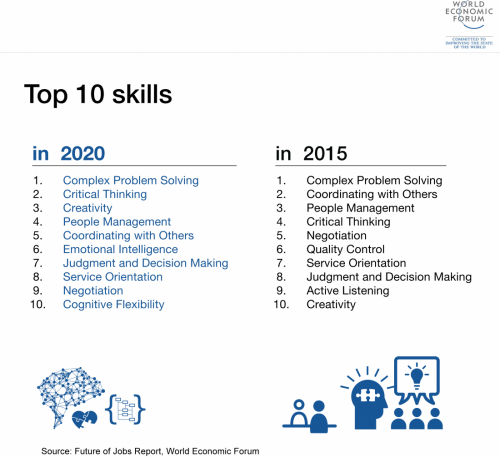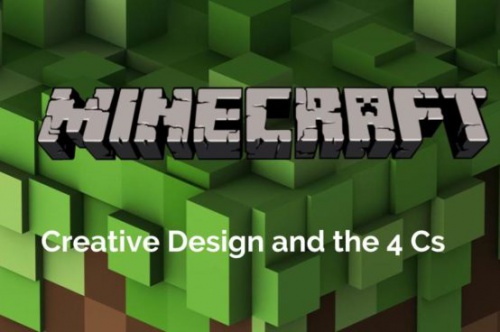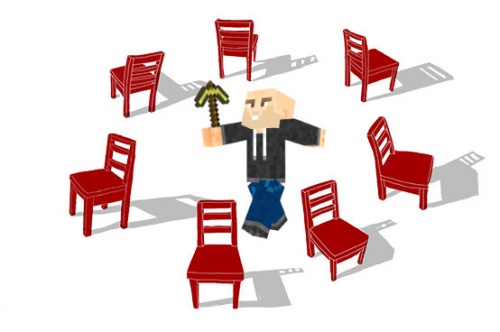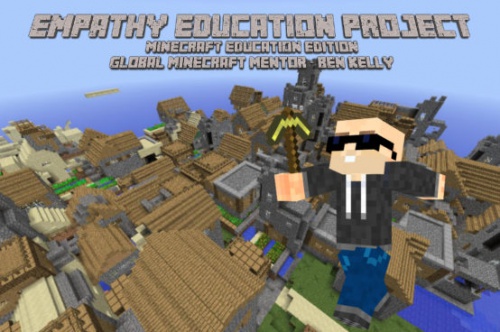My Minecraft journey lesson six: Minecraft: Education Edition and life-ready skills
Contents
- 1 Description
- 2 Module 1: Research Findings
- 3 Module 3: Creativity and Critical Thinking
- 4 Module 4: Communication and Collaboration
- 5 Module 5: Classroom Roles
- 6 Module 6: Try & Apply
- 7 Module 7: Challenge Yourself!
- 8 Module 8: 3-5 Rubrics
- 9 Module 9: 6-12 Rubrics
- 10 Module 10: Rubrics Exercise
- 11 Module 11: Sample Lessons
- 12 Module 12: Reflect & Share
- 13 Module 13: Questions to Consider
- 14 Module 14: Next Steps
- 15 Source
Description
In this lesson, participants explore how Minecraft: Education Edition can be used as a teaching and learning tool to provide students opportunities to practice important, life-ready skills. They view sample rubrics and reflect on how to use these models, or adapted versions of them, for assessing process skills.
Lesson-Framing Question
How can Minecraft: Education Edition help support students in application of life-ready skills?
Lesson Objectives
- Participants explore life-ready skills and examples of how Minecraft: Education Edition can support these.
- Participants consider how rubrics can help in assessment when using Minecraft: Education Edition for teaching and learning.
- Participants explore and adapt model rubrics for assessing sample Minecraft: Education Edition lessons.
Module 1: Research Findings
As the world changes and moves towards increased automation, the skills students need to practice in school have to change as well. Students are preparing for jobs and careers that are not even invented yet. According to a recent Microsoft Study, “The Class of 2030 and Life-Ready Learning: The Technology Imperative”, future learning will be highly social, personalized, and technology rich. A few key highlights from the study include:
- One of the strongest themes in the research was the significance of developing and applying social and emotional skills in learning. Results showed that these skills are twice as predictive of a student’s academic achievement as home environment and demographics.
- Students want to be creative and believe they learn more when they have greater voice and choice and receive personalized feedback.
- Personalized, inclusive, and immersive learning experiences fostered by technology create opportunities to develop emotional and cognitive skills in conjunction with academic learning.
Learn more about the class of 2030.
The World Economic Forum claims the top two skills students will need in 2020 are complex problem solving and critical thinking. These are followed by other dispositions and skills that rely on communication, collaboration, and creativity. Minecraft: Education Edition’s immersive platform gives students the opportunity to practice life-ready skills while they are engaged in learning and actively creating content.
As you read through these skills, use your Course Notes document to reflect on the following questions:
- Which skills do your students routinely practice in your classroom?
- How might you provide more opportunities for your students to hone these skills?
- Of these skills, which ones might your students need the most practice?
Now, let’s take a deeper dive into some of the specific life-ready skills that Minecraft: Education Edition supports and gives students opportunities to practice!
Module 3: Creativity and Critical Thinking
Minecraft: Education Edition supplies a creative outlet for learners to express themselves freely. By engaging in-game, learners have opportunities to be innovative and inventive, using critical thinking to try new approaches to show what they know. In Creative Mode, students have unlimited inventory of every block they need to craft and build whatever they can imagine. In Survival Mode, students are able to find creative ways to think critically and problem solve in order to beat the odds, stay alive, and prosper in-game. Players get hungry and need to figure out how to eat. They also have to figure out how to avoid taking damage from drowning, falling, fire, and hostile mobs.
As you’ve seen through exploring resources from previous lessons, there are limitless ways to let students practice creative expression and critical thinking while engaged in Minecraft: Education Edition. An awesome way that the Minecraft: Education Edition team helps to provide opportunities for this is through their Global Monthly Student Challenges that are posted online via the Minecraft: Education Edition Twitter account @playcraftlearn and on their official blog.
Take a look at three challenges they’ve offered. As you explore, think about ways that these challenges can help students practice life-ready skills like creativity and critical thinking. Use your Course Notes document to make note of takeaways you have or challenges you might like to try.
Time Machine
Choose a space in your community, school, or home then use Minecraft: Education Edition to reimagine the space. What will the space look like 100 years in the future? What did the space look like 100 years ago? How can the space change to meet a current or future need? What necessitated the changes over time?
Extensions:
- Use the Book & Quill to write a short essay to accompany your build about the changes you foresee or those you researched.
- Use the structure block and mixed reality viewer to photograph your creation next to the real location.
- Share images and/or videos of your work with the community on Twitter using the #MinecraftEDU hashtag.
Copy and paste this link into your browser to start building:
minecraftedu://?openlibrary=G009ST256463
Zero Waste
Did you know that every year roughly one third of the food produced in the world for human consumption gets lost or wasted? That's 1.3 billion tons of food! Use this starter world and challenge yourself to build and document ways you can reduce food waste in your home, school, and community. Let's build a better world together!
Extensions:
- Research the problem and proactive steps you can take and use tools such as boards and the camera to take a video and document your work.
- Share images and/or videos of your work with the community on Twitter using the #MinecraftEDU hashtag.#MinecraftEDU
Copy and paste this link into your browser to start building:
minecraftedu://?openlibrary=G009ST49ZZKF
International Space Station
Did you know that humans have been living in space for almost 20 years? Minecraft: Education Edition is celebrating this historic anniversary with a new International Space Station world for you to explore! The ISS has been continuously occupied since November 2000, and orbits Earth every 90 minutes. The six-person crew lives and works in the solar-powered station, which offers sleeping quarters, bathrooms, a gym and a 360-degree view bay window to look down to Earth. Researchers from 103 countries have conducted thousands of experiments on the ISS, and you are next! Design a new module for the ISS and describe what hypothetical scientific experiments you will run.
Extensions:
- Go on a scavenger hunt, find and label each of the ISS parts and modules then write a description about how each is used.
- Research facts about the ISS using the NASA website and tools like Eyes on the Solar System.
- Use the Camera, Book & Quill and Boards in Minecraft: Education Edition to document your work.
- Share images and/or videos of your work with the community on Twitter using the #MinecraftEDU hashtag.
Copy and paste this link into your browser to start building:
minecraftedu://?openlibrary=G009ST4TW6XH
Module 4: Communication and Collaboration
Minecraft: Education Edition can be played in a number of ways—individually, in small groups, or even as a whole class. Small and whole group play gives students a unique opportunity to practice both communication and collaboration skills —working together to reach a goal while sharing thoughts, questions, ideas, and solutions. Students solve problems together while practicing negotiation skills—co-play is a skill that research shows helps students learn better.
One way to encourage both collaboration and communication while students are engaged in-game, is to create classroom roles. Roles will ensure that students each have a part to play in the learning process. They also help to bring clarity to learning experiences and can reduce chaos and off-task behaviors. Roles can be changed depending on the lesson, with students having the opportunity to try out different ones.
Module 5: Classroom Roles
Classroom roles might include:
- Team Leader: has world launched first and named on his or her computer. Guides group with decisions and directions
- Time Keeper: reminds team of benchmark times needed to complete the stages of the task: planning, researching, and building
- Recorder: notes aspects to include with details
- Encourager: helps team problem solve in a positive manner
- Researcher: uses digital tools to research for the group
How are these classroom roles similar to or different from the roles that they may already have in the learning environment? Which roles might you need to add in order to help your students practice better collaboration and communication while they are engaged in-game? Feel free to write down any of your ideas in your Course Notes document.
Module 6: Try & Apply
How Do You Know That Students Are Learning?
While we know that students are developing life-ready skills in Minecraft: Education Edition, assessing those skills can be a challenge. Rubrics are one way to assess life-ready skills. Rubrics offer students insight into learning as a process, and help students understand what they have been successful at and where they still have room to grow. Rubrics also offer educators the opportunity to consider assessment from various angles. When creating a learning experience, you can also consider whether you will be assessing the end product, several small products along the way, the process of getting to the end product, or maybe a combination of all of these things with a series of rubrics.
Module 7: Challenge Yourself!
Now it is your turn. Start by diving into a few sample rubrics that can be used to assess life-ready skills, such as creativity, critical thinking, communication, and collaboration during projects. While you explore these rubrics, think about what they measure and how they measure it. Remember, as you are working, record any takeaways, ah-ha moments, or things you want to come back to later in your Course Notes document.
The following rubrics come from PBL Works, a project of the Buck Institute for Education.
Module 8: 3-5 Rubrics
Module 9: 6-12 Rubrics
Module 10: Rubrics Exercise
Now that you’ve had a chance to consider rubrics that help to assess important life-ready skills, think about how those rubrics could help you to feel more confident in knowing and understanding that students are learning while in-game.
First, choose one of the sample lessons below. Open the lesson and explore what it’s asking students to do. Next, choose one of the two options:
- Modify Existing Rubric: Using one of the rubrics listed above, consider how this rubric would be a good measure of assessment for this lesson. What areas of the rubric are strong for assessing student learning and skills acquisition? What might you need to add to the rubric to better assess your students?
- Create New Rubric: Using the sample rubrics as a model, create your own rubric for the lesson. What will you measure or assess to help your students during the learning process?
Module 11: Sample Lessons
Collaborative Design and the 4Cs
In this lesson, each pair of students will pick a location, research it, then create a landmark for the location. Students will rotate work with other students to share and showcase their designs. They will not only learn about the place they are creating, but will also be using the 4 Cs: Collaboration, Communication, Creativity, and Critical Thinking.
Minecraft: Education Edition Musical Chairs Project: Co-Construct a Village
This project serves as a terrific starter project for educators and classes new to Minecraft: Education Edition. Using the seed suggested here or another with a guaranteed village near spawn, students can begin to take that simple village to a whole new level. Transforming a village to a legit town involves a lot of work, but by employing the Musical Chairs Project approach every student will feel 100% involved and engagement will never decrease through the life of the project.
Empathy Education with Minecraft: Education Edition
In this project, students will be presented with different families in Minecraft suffering in different ways. They could encounter situations such as Illness, expanding family, loss of jobs, and even in-laws needing to move in. Students will examine their situation, generate creative solutions, and critically examine and choose solutions that will best help and finally implement them while building the family a dream home.
Reflect on your takeaways from this lesson. You have two lessons left, so record this reflection in your Course Notes document to look back at when you finish the course.
Feel free to share your reflection (and what you learned) via the My Minecraft Course Lesson 6 topic on Flipgrid or by tweeting it out using the #MinecraftEDU hashtag on Twitter.
Module 13: Questions to Consider
- How can Minecraft: Education Edition support practice and acquisition of important life-ready skills for students?
- What role does assessment play in teaching and learning with Minecraft: Education Edition?
- What questions do you still have about using Minecraft: Education Edition? What would you like to know more about?
Module 14: Next Steps
Take the Lesson 6 quiz, then you can move on to Lesson 7.
Return to Overview Page.
